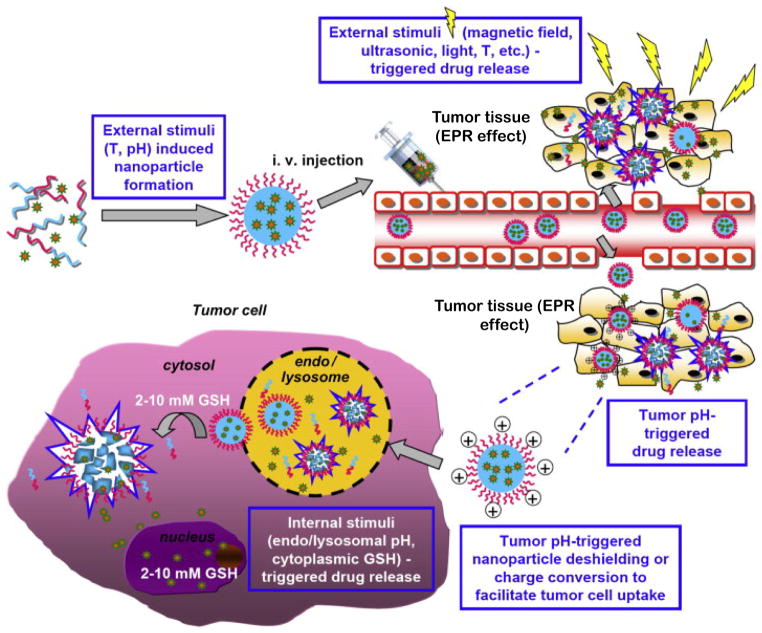Figure 3.
Stimuli responsive nanopreparations as emerging drug delivery and controlled drug release systems. The various stimuli are applied as following: (I) External stimulus such as temperature (T) and pH is utilized to facilitate formation of nanoparticles; (II) External stimuli such as magnetic field, ultrasonic, light, and temperature allows for remotely controlling the precision of spatial and temporal drug release; (III) acidic tumor pH (6.5–7.2) is utilized to trigger drug release and/or reverse shielding of nanoparticles at tumor site thereby enhancing tumor cell uptake of nanoparticulate drugs; and (IV) intracellular environments such as low pH in endo/lysosomal compartments and high redox potential in cytoplasm are utilized to improve intracellular drug release inside tumor cells adapted from (8)

